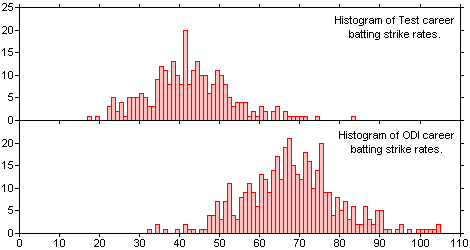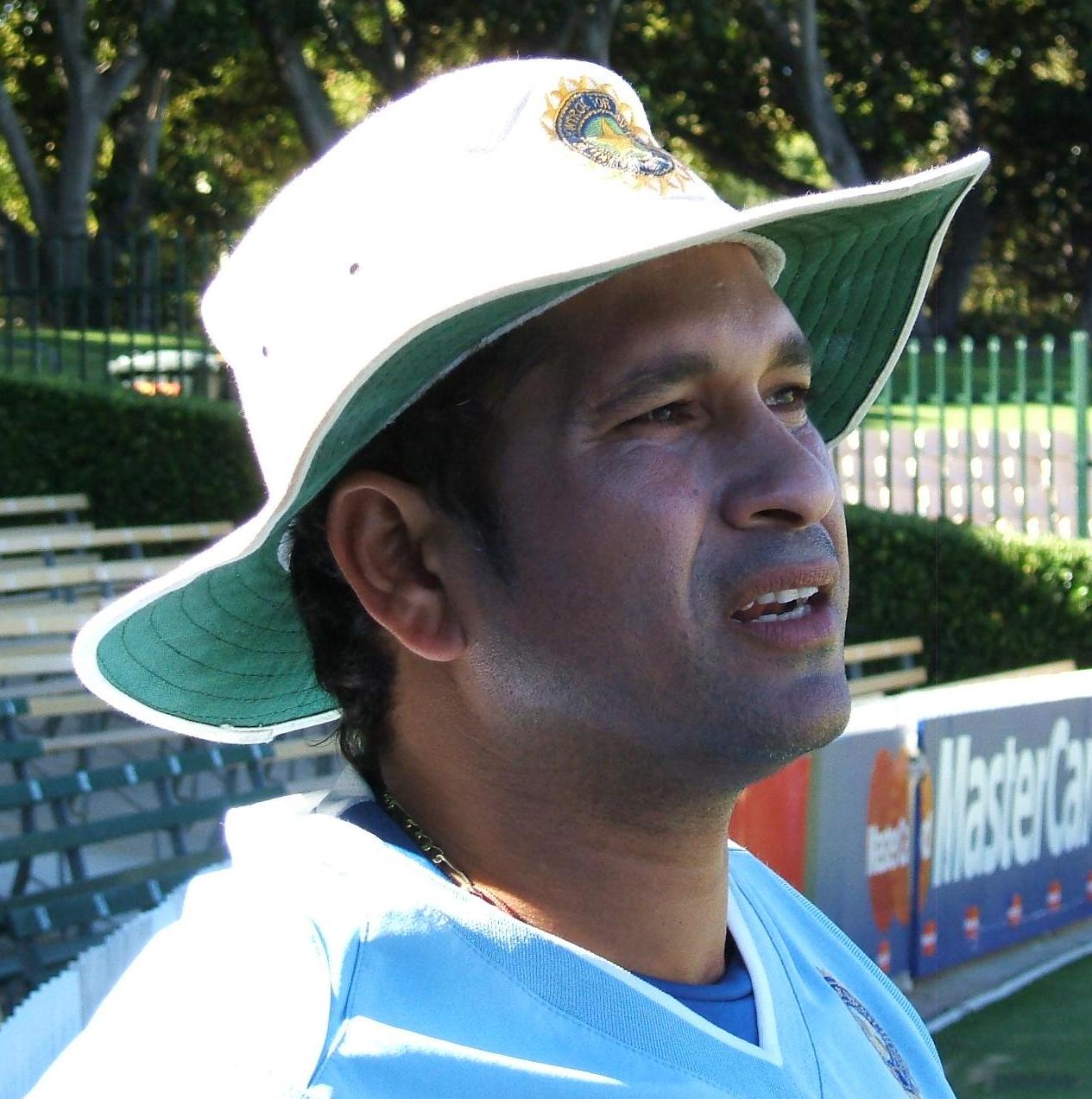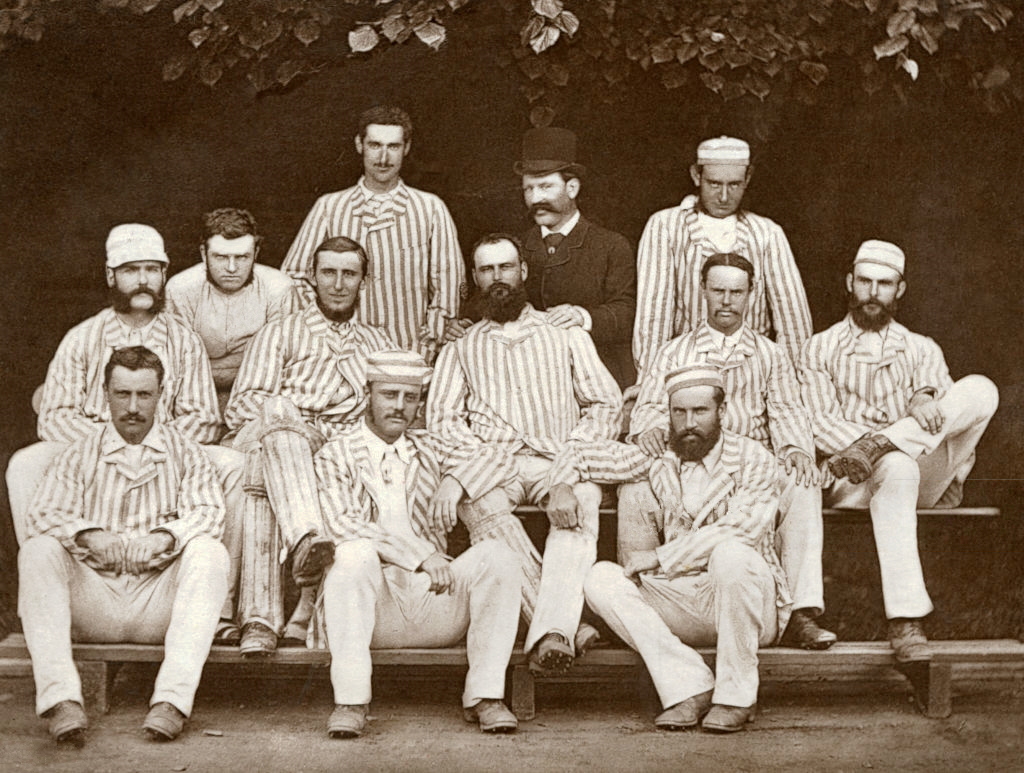|
Adam Gilchrist
Adam Craig Gilchrist (; born 14 November 1971) is an Australian cricket commentator and former international cricketer and List of Australia national cricket captains, captain of the Australia national cricket team. He was an attacking left-handed batsman and record-breaking wicket-keeper, who redefined the role for the Australia national team through his aggressive batting. Widely regarded as the greatest wicket-keeper-batsman in the history of the game, Gilchrist held the world record for the most dismissals by a wicket-keeper in One Day International (ODI) cricket until it was surpassed by Kumar Sangakkara in 2015 and the most by an Australian in Test cricket. Gilchrist was a member of the Australian team that won three consecutive world titles in a row: the 1999 Cricket World Cup, the 2003 Cricket World Cup, and the 2007 Cricket World Cup, along with winning the 2006 ICC Champions Trophy. His strike rate is amongst the highest in the history of both ODI and Test cricket; h ... [...More Info...] [...Related Items...] OR: [Wikipedia] [Google] [Baidu] |
Member Of The Order Of Australia
The Order of Australia is an Australian honours and awards system, Australian honour that recognises Australian citizens and other persons for outstanding achievement and service. It was established on 14 February 1975 by Elizabeth II, Monarchy of Australia, Queen of Australia, on the Advice (constitutional law), advice of then prime minister Gough Whitlam. Before the establishment of the order, Australians could receive Orders, decorations, and medals of the United Kingdom, British honours, which continued to be issued in parallel until 1992. Appointments to the order are made by the Governor-General of Australia, governor-general, "with the approval of The Sovereign", according to recommendations made by the Council for the Order of Australia. Members of the government are not involved in the recommendation of appointments, other than for military and honorary awards. The King of Australia is the sovereign head of the order, and the governor-general is the principal companio ... [...More Info...] [...Related Items...] OR: [Wikipedia] [Google] [Baidu] |
2003 Cricket World Cup
The 2003 ICC Cricket World Cup was the eighth Cricket World Cup, organised by the International Cricket Council (ICC). It was co-hosted by South Africa, Zimbabwe and Kenya from 9 February to 23 March 2003. This edition of the World Cup was the first to be played in Africa. The tournament featured 14 teams, the largest number in the World Cup's history at the time, playing a total of 54 matches. It followed the format introduced in the 1999 Cricket World Cup, with the teams divided into two groups, and the top three in each group qualifying for the Super Sixes stage. The tournament saw numerous upsets, with South Africa, Pakistan, West Indies and England all being eliminated at the group stage (South Africa missed by 1 run after misreading the Duckworth-Lewis method rules). England forfeited their match with Zimbabwe, due to the political unrest in the country, which ultimately enabled that team to reach the Super Sixes. Similarly, New Zealand forfeited their match with Kenya, ... [...More Info...] [...Related Items...] OR: [Wikipedia] [Google] [Baidu] |
List Of Cricket Terms
This is a general glossary of the terminology used in the sport of cricket. Where words in a sentence are also defined elsewhere in this article, they appear in italics. Certain aspects of cricket terminology are explained in more detail in cricket statistics and the naming of fielding positions is explained at fielding (cricket). Cricket is known for its rich terminology.''Glossary of cricket terms''. England Cricket Board. Retrieved 13 May 2008."Cricket Academy – Glossary". BBC News. Retrieved 13 May 2008. Some terms are often thought to be arcane and humorous by those not familiar with the game. ... [...More Info...] [...Related Items...] OR: [Wikipedia] [Google] [Baidu] |
Boundary (cricket)
In cricket, the boundary is the perimeter of a playing field. It is also the term given to a scoring shot where the ball is hit to, or beyond, that perimeter, which generally earns four or six runs for the batting team. Briefly, if the ball is struck by the batter and rolls or bounces over the boundary (or just touches it) it is known as a "four", and scores four runs, whereas if it flies over (or touches) the boundary, without touching the ground before that, it is called a "six", and scores six runs. There are rules covering every possible situation, including the fairly common one when a fielder is in the air beyond the boundary when he or she catches or strikes the ball with his or her hand or another part of the body. Edge of the field The boundary is the edge of the playing field, or the physical object (often a rope) marking the edge of the field. In low-level matches, a series of plastic cones or flags are sometimes used. Since the early 2000s, the boundaries at prof ... [...More Info...] [...Related Items...] OR: [Wikipedia] [Google] [Baidu] |
Century (cricket)
In cricket, a century is a score of 100 or more runs in a single innings by a batter. The term is also included in "century partnership" which occurs when two batsmen add 100 runs to the team total when they are batting together. A century is regarded as a landmark score for batters and a player's number of centuries is generally recorded in their career statistics. Scoring a century is loosely equivalent in merit to a bowler taking a five-wicket haul, and is commonly referred to as a ton or hundred. Scores of more than 200 runs are still statistically counted as a century, although these scores are referred to as double (200–299 runs), triple (300–399 runs), and quadruple centuries (400–499 runs), and so on. Reaching 50 runs in an innings is known as a half-century. Scoring a century at Lord's cricket ground in London earns the batter a place on the Lord's honours boards. Earliest known centuries Centuries were uncommon until the late 19th century because of th ... [...More Info...] [...Related Items...] OR: [Wikipedia] [Google] [Baidu] |
Strike Rate
Strike rate refers to two different cricket statistics, statistics in the sport of cricket. Batting strike rate is a measure of how quickly a batsman, batter achieves the primary goal of batting (cricket), batting, namely scoring run (cricket), runs, measured in runs per 100 balls; higher is better. Bowling strike rate is a measure of how quickly a bowler (cricket), bowler achieves the primary goal of bowling (cricket), bowling, namely taking wicket (cricket), wickets (i.e. getting batters out), measured in balls per wicket; lower is better. For bowlers, economy rate is a more frequently discussed statistic. Both strike rates are relatively new statistics, having only been invented and considered of importance after the introduction of One Day International cricket in the 1970s. Batting strike rate Batting strike rate (s/r) is defined for a batter as the average number of runs scored per 100 delivery (cricket), balls faced. The higher the strike rate, the more effective a batter ... [...More Info...] [...Related Items...] OR: [Wikipedia] [Google] [Baidu] |
2006 ICC Champions Trophy
The 2006 ICC Champions Trophy was a One Day International cricket tournament held in India from 7 October to 5 November 2006. It was the fifth edition of the ICC Champions Trophy (previously known as the ICC Knock-out). The tournament venue was not confirmed until mid-2005 when the Indian government agreed that tournament revenues would be free from tax (the 2002 tournament had been due to be held in India, but was switched to Sri Lanka when an exemption from tax in India was not granted). Australia won the tournament, their first Champions Trophy victory. They were the only team to get one loss in the tournament, as all other teams lost at least two matches. West Indies, their final opponents, beat Australia in the group stage but were bowled out for 138 in the final and lost by eight wickets on the Duckworth–Lewis method. West Indies opening batsman Chris Gayle was named Player of the Tournament. English writer Tim de Lisle said the tournament "had been fun" because "it h ... [...More Info...] [...Related Items...] OR: [Wikipedia] [Google] [Baidu] |
Kumar Sangakkara
Kumar Chokshanada Sangakkara (; born 27 October 1977) is a Sri Lankan former professional cricketer who represented Sri Lanka from 2000 to 2015. A former captain in all formats. He was born in Matale, Central Province. In first-class cricket, he played for Nondescripts Cricket Club from 1997–98 to 2013–14 and for Surrey County Cricket Club from 2015 to 2017. He was a key part of the Sri Lankan squads which won the 2001-02 Asian Test Championship, 2002 ICC Champions Trophy and 2014 T20 World Cup. Sangakkara played mostly as a wicket-keeper-batter and is generally regarded as one of the greatest wicket-keeper-batters in cricket history. His 38 Test centuries and 25 in ODIs are both highest for a wicket-keeper. He batted left-handed and, although he rarely bowled, was a right-arm off spinner. Combining all three forms of international cricket, Sangakkara is the second-highest run-scorer, having amassed a total of 28,016 including 63 centuries. He has highest ave ... [...More Info...] [...Related Items...] OR: [Wikipedia] [Google] [Baidu] |
Wicket-keeper-batsman
In cricket, the wicket-keeper is the player on the fielding side who stands behind the wicket, ready to stop deliveries that pass the batsman, and take a catch, stump the batsman out, or run out a batsman when occasion arises. The wicket-keeper is the only member of the fielding side permitted to wear gloves and external leg guards. The role of the keeper is governed by Law 27 and of the ''Laws of Cricket''. Stance Initially, during the bowling of the ball the wicket-keeper crouches in a full squatting position but partly stands up as the ball is received. Australian wicket-keeper Sammy Carter (1878 to 1948) was the first to squat on his haunches rather than bend over from the waist (stooping). Purposes The keeper's major function is to stop deliveries that pass the batsman (in order to prevent runs being scored as 'byes'), but he can also attempt to dismiss the batsman in various ways: * The most common dismissal effected by the keeper is for him to '' catch'' a ... [...More Info...] [...Related Items...] OR: [Wikipedia] [Google] [Baidu] |
Wicket-keeper
In cricket, the wicket-keeper is the Cricket player, player on the fielding (cricket), fielding side who stands behind the wicket, ready to stop Delivery (cricket), deliveries that pass the batsman, and take a Caught, catch, Stumped, stump the batsman out, or run out a batsman when occasion arises. The wicket-keeper is the only member of the fielding side permitted to wear gloves and external leg guards. The role of the keeper is governed by Law 27 and of the ''Laws of Cricket''. Stance Initially, during the bowling of the ball the wicket-keeper crouches in a full squatting position but partly stands up as the ball is received. Australian wicket-keeper Sammy Carter (1878 to 1948) was the first to squat on his haunches rather than bend over from the waist (stooping). Purposes The keeper's major function is to stop deliveries that pass the batsman (in order to prevent run (cricket), runs being scored as 'byes'), but he can also attempt to dismissal (cricket), dismiss the b ... [...More Info...] [...Related Items...] OR: [Wikipedia] [Google] [Baidu] |
Batsman
In cricket, batting is the act or skill of hitting the cricket ball, ball with a cricket bat, bat to score runs (cricket), runs and prevent the dismissal (cricket), loss of one's wicket. Any player who is currently batting is, since September 2021, officially referred to as a batter regardless of whether batting is their particular area of expertise. Historically, ''batsman'' and ''batswoman'' were used, and these terms remain in widespread use. Batters have to adapt to various conditions when playing on different cricket pitches, especially in different countries; therefore, as well as having outstanding physical batting skills, top-level batters will have quick reflexes, excellent decision-making skills, and be good strategists. During an innings two members of the batting side are on the pitch at any time: the one facing the current delivery from the bowler is called the striker, while the other is the non-striker. When a batter is dismissal (cricket), out, they are replac ... [...More Info...] [...Related Items...] OR: [Wikipedia] [Google] [Baidu] |
Australia National Cricket Team
The Australia men's national cricket team represents Australia in international cricket. Along with England, it is the joint oldest team in Test cricket history, playing and winning the first ever Test match in 1877; the team also plays One-Day International and Twenty20 International cricket, participating in both the first ODI, against England in the 1970–71 season and the first T20I, against New Zealand in the 2004–05 season, winning both games. The team draws its players from teams playing in the Australian domestic competitions – the Sheffield Shield, the Australian domestic limited-overs cricket tournament and the Big Bash League. Australia are the current ICC Cricket World Cup champions. They are often regarded as the most successful national team in the history of cricket. The national team has played 875 Test matches, winning 419, losing 234, 219 drawn and with 2 tied , Australia is first in the ICC Test Rankings. Australia is the most successful team in T ... [...More Info...] [...Related Items...] OR: [Wikipedia] [Google] [Baidu] |









